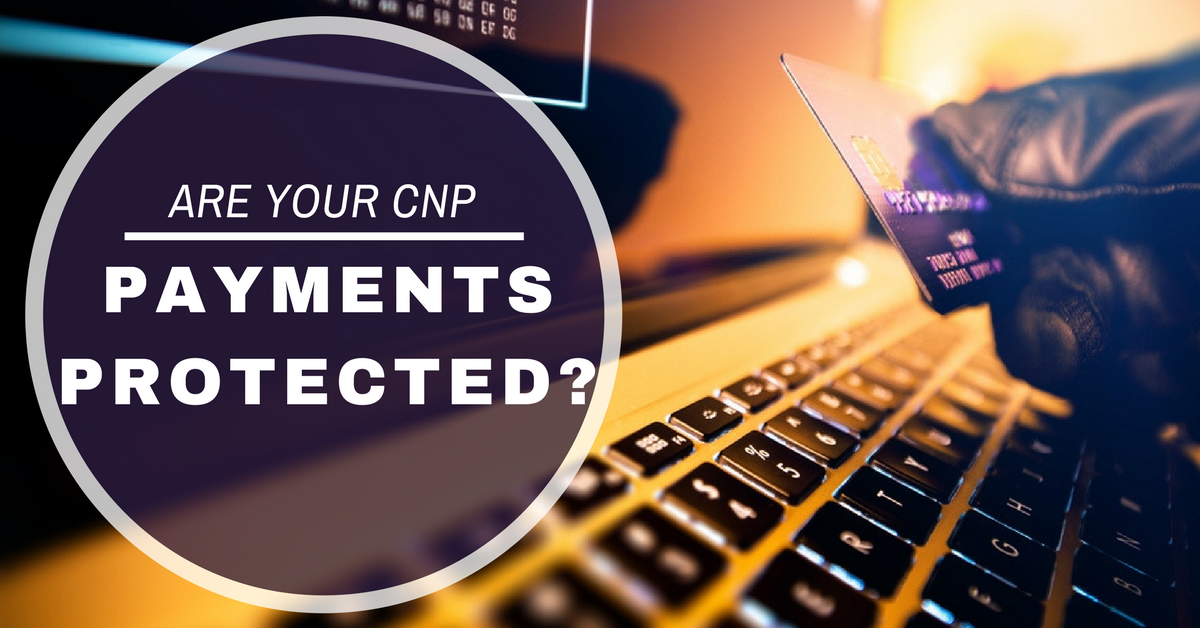
Card-not-present (CNP) payments are a double-edged sword. On one hand, they make purchasing digital and physical goods online exceedingly easy.
Customers can browse the websites of their favorite merchants and complete a transaction from a variety of devices, including laptops, mobile phones, smart TVs or voice-controlled assistants. It’s an exciting time to be alive.
On the other hand, CNP fraud spiked 40% in 2016 and could cost online merchants upwards of $7.2 billion in fraud losses within the next two years.
The reality is that this problem affects big and small merchants alike. Many online retailers are only scratching the surface when it comes to employing effective CNP fraud prevention tools. Let’s look at some of the ways you can strengthen CNP fraud prevention to keep your customers—and your business—protected.
Basic CNP Fraud Prevention Tools
Merchants need to cover the basics when it comes to CNP fraud prevention. Many consider chargebacks and false positives a “cost of doing business”, but that’s simply not true if you don’t even have the bare essentials in place to secure and validate payments.
There are key front-end CNP fraud prevention tools recommended by the card brands that every online merchant should have in place.
Card Verification Value 2 Authentication
Using CVV2 authentication means asking the person attemtping to make a purchase to submit the three-digit security number printed on the back of all Visa card’s signature panels. This validates that the customer is in possession of the card at the time of purchase.
Submitting a CVV2 along with the expiration date and card number can bolster authentication.
Address Verification Service
Address Verification Service (AVS) enables the merchant to validate the billing address with the issuer at the time of authorization. This tool allows merchants to help identify whether the person using the card is actually the cardholder, although AVS only works for addresses in the US and Canada.
AVS can be submitted with the authorization request or transmitted alone. If the latter, a merchant will receive a code that indicates whether the address provided by the purchaser matches what the issuer has on file or not. Merchants can use that code to evaluate next steps. For example, if other CNP fraud prevention tools throw a flag and the AVS code shows an address mismatch, merchants can manually review the transaction or decline.
Verified By Visa
Verified by Visa uses the 3D Secure Protocol to ensure CNP payments are being made by the true owner of the Visa account. This tool can also boost consumer confidence in the online shopping process as customers know their private data is taken seriously and protected. This additional layer of security streamlines fast and secure payments for both the merchant and the customer.
This tool can also help decrease chargebacks by preventing fraudulent chargebacks (and associated losses). Merchants can also shift liability to the issuer for qualified transactions. Overall, it is a strong tool for CNP fraud prevention and also increases customer confidence.
Strengthening CNP Fraud Prevention
While essential, these tools are only a beginning when it comes to CNP fraud prevention. Merchants need a tailored suite of fraud tools that meet the needs of their business model and profile.
The ultimate goal is to balance user experience with risk to create frictionless payments experiences. There truly is no time to waste: research shows a 1 second delay could cost $2.5 million per year in ecommerce sales (with $100,000 in daily sales). Alternatively, a 100 millisecond improvement in speed can yield a 1% increase in revenue.
While rules-based systems can provide some protection, layering in device- and location-based technology can supplement CNP fraud prevention armor, reduce fraud losses, and boost the bottom line. Merchant should consider tools like device fingerprinting, which collects information on remote computing devices for identification. Used in conjunction with 3D Secure, device fingerprinting can detect and put a stop to credit card fraud and identity theft. It also goes one step further and helps merchants identify whether a user is likely to commit fraud, based on the signal pofile.
IP geolocation is another helpful tool. By scrubbing incoming IP addresses against IP geolocation databases, merchants can spot inconsistencies in account access patterns and purchase history. These indicators of account-takeover (ATO) fraud can be used to block suspicious traffic, submit a request for verification via email/SMS, or flag odd activity for manual review.
Conclusion
CNP fraud prevention is complex, evolving, and essential. Investing in a customized set of fraud prevention tools for your business doesn’t only cut fraud-related costs; it can have a positive impact on sales, boost customer confidence, and decrease costs associated with false positives.
While merchants are well-advised to implement the basic tools we discuss in this article, it can also be helpful to work with your payment services provider to augment with a tailored suite of CNP fraud prevention methods built for your business.
We’d love to help you get started. Contact us today to learn how we can protect your payments so you can focus on your core business.
